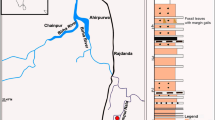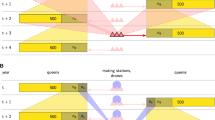Abstract
THE Hymenopterous gall-makers of the family Cynipidæ, though widely distributed over the earth, have seemed to be totally absent from the West Indies, somewhat to the astonishment of entomologists. However, in February, 1892, Mr. W. Harris sent me a gall on Bidens reptans, collected by Mr. Nicholls at Cinchona, Jamaica. The gall was a large oblong swelling attached to the stem of the plant, and contained many cells. Unfortunately, I was not able to breed the flies, but I secured some immature fragments, which sufficed to show that they were Cynipidæ. Mr. W. H. Ashmead, to whom I submitted my notes and sketches, is of opinion that the genus must be Aulax or allied thereto. Although, it is impossible to determine the species, it seems desirable to call attention to the occurrence of this gall-maker in Jamaica; and perhaps one of your West Indian readers will be able to supply us with complete information.
This is a preview of subscription content, access via your institution
Access options
Subscribe to this journal
Receive 51 print issues and online access
$199.00 per year
only $3.90 per issue
Buy this article
- Purchase on SpringerLink
- Instant access to full article PDF
Prices may be subject to local taxes which are calculated during checkout
Similar content being viewed by others
Author information
Authors and Affiliations
Rights and permissions
About this article
Cite this article
COCKERELL, T. A Gall-making Cynipid Fly in Jamaica. Nature 65, 561 (1902). https://doi.org/10.1038/065561c0
Issue date:
DOI: https://doi.org/10.1038/065561c0



